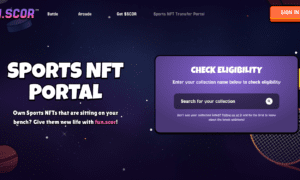Maximizing website performance is pivotal in today’s digital landscape. High-performing websites engage and retain users, support SEO strategies, and enhance the overall user experience. Lara Rahib shares her top tips for improving website speed and user experience.
Reimagining User Experience (UX)
Understanding User Experience (UX) is more than just a checkbox for website design; it’s the art of crafting your website to fit the needs and wants of your visitors. Imagine stepping into your users’ shoes and navigating your site as they would. The ease with which they find information, the smoothness of transitions, and the clarity of content all contribute to a positive or negative experience. A well-designed UX seamlessly guides users through your site, making their journey satisfactory and delightful. It’s about anticipating their needs and exceeding their expectations, ensuring they find value in your offer without feeling overwhelmed or lost.
Furthermore, UX is a critical factor that influences not just user satisfaction but also the overall effectiveness of your site. A compelling UX design fosters engagement, encourages longer visits, and increases the likelihood of users taking the desired action, be it making a purchase, signing up for a newsletter, or reaching out for more information. It’s a holistic approach that considers every element of your site—from typography and color schemes to navigation structure and content organization—to create a cohesive, user-friendly experience. By prioritizing UX, you’re not just designing a website; you’re building a gateway that connects your audience with your brand in the most efficient, enjoyable way possible.
Optimizing Page Speed
Page speed is a critical component of website performance. Crucial steps include optimizing images, reducing redirects, limiting HTTP requests, and enabling compression. Tools like TinyPNG offer efficient image compression without quality loss. At the same time, techniques such as using a CDN can significantly reduce load times by serving content from locations closer to the user.
The Essence of Responsive Design
Responsive design is not just a feature; it’s the backbone of modern web development that ensures your website adapts to the screen it’s viewed on, be it a smartphone, tablet, laptop, or desktop. This adaptability is crucial in today’s digital age, where mobile browsing has overtaken desktop. It’s all about providing a consistent and seamless user experience, regardless of the device. A responsive website dynamically adjusts its layout, images, and content to fit the device’s screen size and resolution, offering optimal usability and navigation. This fluidity is key to keeping your audience engaged, reducing zooming, scrolling, and resizing that can frustrate users and drive them away.
Moreover, Lara Rahib adds that responsive design has significant implications beyond user satisfaction. It’s a critical component in SEO strategy, as Google and other search engines prioritize mobile-friendly websites in their search rankings. By embracing responsive design, you’re enhancing user experience and boosting your site’s visibility on search engines, paving the way for increased traffic and potential conversions. Adopting a responsive design is an investment in your website’s future, ensuring it remains accessible, relevant, and competitive in the ever-evolving digital landscape.
Mastering Effective Caching Strategies
Effective caching is akin to having a well-organized pantry in your kitchen, where ingredients are readily available, making meal preparation quicker and more efficient. In the context of web performance, caching serves a similar purpose. It stores copies of your website’s files (like CSS, JavaScript, and images) in a temporary storage location, allowing faster access and reduced server load on subsequent visits. This mechanism significantly speeds up page loading times for repeat visitors, as their browser doesn’t have to retrieve each file from the web server again. Instead, it utilizes the stored versions, ensuring a swift, responsive experience that delights users and encourages them to stay longer on your site.
Furthermore, leveraging caching effectively means striking the right balance between speed and content freshness. By setting appropriate cache lifetimes for different types of content, you can ensure that users are served with the most up-to-date information without compromising loading times. Longer cache durations can be applied for static content that rarely changes, such as logos or style sheets. Meanwhile, dynamic content updates more frequently and may require shorter caching times or more sophisticated strategies like validation tokens. Navigating these nuances is crucial in optimizing your website’s performance, enhancing user satisfaction, and maintaining the relevance and accuracy of the content they’re accessing.
Minimizing HTTP Requests
The number of HTTP requests a website makes significantly affects its load time. Reducing these requests through strategies like sprite sheets for images, merging CSS and JavaScript files, and eliminating unnecessary plugins can dramatically improve performance.
Leveraging Multimedia Wisely
While multimedia elements like images and videos can enrich the user experience, they also have the potential to slow down your site if not used wisely. Optimize media by compressing images, using efficient formats like WebP, and loading videos only when necessary. Responsive images that adapt to screen size can also significantly improve loading times.
Conclusion
Maximizing website performance is an ongoing process that involves a keen understanding of user experience, page speed optimization, responsive design, and effective multimedia use. By implementing these best practices from Lara Rahib Reviews, you can ensure your site attracts and retains users, ultimately contributing to your online success. Remember, a fast and responsive website is not just about improving metrics; it’s about providing your users with a seamless and enjoyable experience, encouraging them to return and engage with your content repeatedly.



































